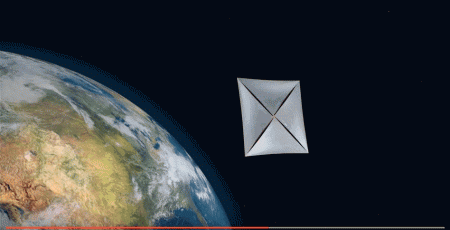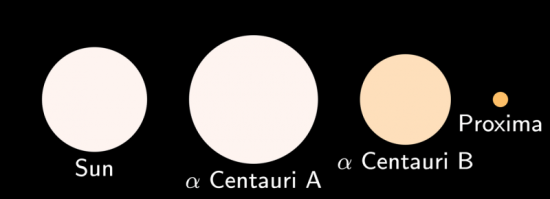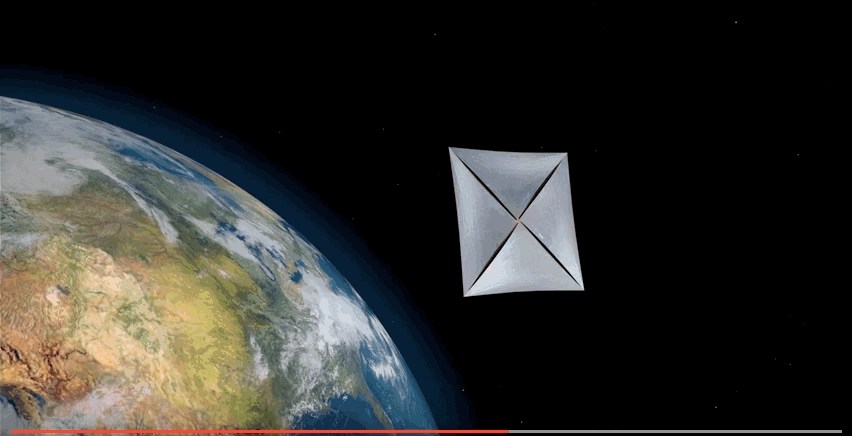July 21, 2016 – Elon Musk wants a colony on Mars to ensure the survival of our species. He is convinced that dependence on one planet is a sure way to extinction. Mars wouldn’t be the first choice of scientists studying the results from the Kepler robotic spacecraft which continues to spot exoplanets circling other stars, not the Sun.
The latest news is about a bevy of planets circling K2-72, a red dwarf star some 181 light-years from Earth. There are four exoplanets circling this small and dim star. All of them are 20 to 50% wider than Earth. Two appear in what we would define as the star’s “habitable zone.” Because K2-72 is a red dwarf the “habitable zone” is much closer to the star than ours here in the Solar System. All four exoplanets if in our Solar System would circle inside Mercury’s orbit.
K2-72c is a planet that completes a single orbit in the equivalent of 15 Earth days. Scientists calculate it is 10% warmer than Earth.
K2-72e orbits its sun in 24 Earth days and is 6% cooler than Earth.
The four new exoplanets are among 104 newly announced discoveries made by Kepler. That brings the total to more than 2,300 exoplanets discovered since the spacecraft’s launch in 2009. But that’s the confirmed list only. There are at least 2,000 more exoplanet discoveries awaiting verification through further observations.
But K2-72 isn’t the only solar system in the news that is getting a closer look from scientists. Two researchers at NASA are giving the twin-star system Alpha Centauri, our second nearest neighbour in the Milky Way, a good look. Alpha Centauri consists of an A and B that are both sunlike stars. A mere 4.4 light years away, the planets circling the two stars are candidates for what scientists hope will soon be possible, the direct imaging of these worlds providing details about their atmospheres and surfaces.
To date we have yet to detect planets circling these stars. But we know a bit about them as neighbours of ours. The two move together orbiting around a common centre point in what amounts to an 80-Earth year circuit. Their closest approach to each other is 11 Angstrom Units (AU). An AU is the orbital distance between the Earth and Sun. The two stars are also closely accompanied by another neighbour, a red dwarf called Proxima Centauri. It is in fact the star closest to us other than the Sun and resembles K2-72, the star system we described above. And considering that Kepler has found a bevy of planets around K2-72 then it shouldn’t be too much of a stretch to believe that we will find exoplanets at Proxima Centauri and probably its two neighbours. The illustration below shows the comparative sizes of our three closest neighbours to our Sun.
Some astronomers argue that binary systems are not suitable for planets because they would lead to unstable orbits. But that is not proving to be the case as we, through Kepler, discover planets around binary and even triple star systems. So a search at Alpha Centauri may be well warranted. If we find planets the scientists have calculated that stable planetary orbits would be possible up to 2.5 AUs from either of the twin stars. In 2012 a detected wobble in Alpha Centauri B suggested the existence of an Earth-sized planet circling the star every three days. It has yet to be confirmed.
To get to Alpha Centauri Ruslan Belikov and Eduardo Bendek, of NASA Ames Research Center, have proposed to send laser-propelled nano spacecraft to the binary system. Their original proposal to NASA back in 2014 was nixed because of budgetary limitations. But a privately-funded initiative known as Breakthrough Starshot, backed by Stephen Hawking and a Russian entrepreneur with $100 million US burning a hole in his pocket, can make the two NASA scientists’ dream a reality.
What would be involved? More than 1,000 nano-sized laser-propelled spacecraft, each incorporating a sail, would be propelled into by laser pulses sent from an Earth-based generator placed somewhere at a high-latitude in the southern hemisphere. Why there? Because Alpha Centauri is only visible to those living south of the Equator.
The laser pulses would be fired daily at each nano spacecraft acting like wind bouncing off the sail. This would accelerate them to 20% the speed of light, approximately 60,000 kilometers (37,000 miles) per second. To capture the maximum energy from a laser pulse each nano spacecraft would incorporate adaptive optics and deformable mirrors. A single laser pulse would generate power equal to the energy needed in the launching of each American space shuttle. When the nano spacecraft arrive at Alpha Centauri they would be traveling much faster than a speeding bullet with no way to decelerate. They would, therefore, have a very short window of opportunity to capture what they observe and send images and data beaming back to Earth.
Breakthrough Starshot could happen by mid-century but it isn’t the only project in the works being thought up to learn more about the Alpha Centauri system. Mission Centaur is a privately fund initiative to build a space telescope dedicated to the Alpha Centauri system. It could be built and launched much sooner than Breakthrough Starshot. Mission Centaur would be a first of its kind since no space telescope to date is designed to just look at a single star system.











